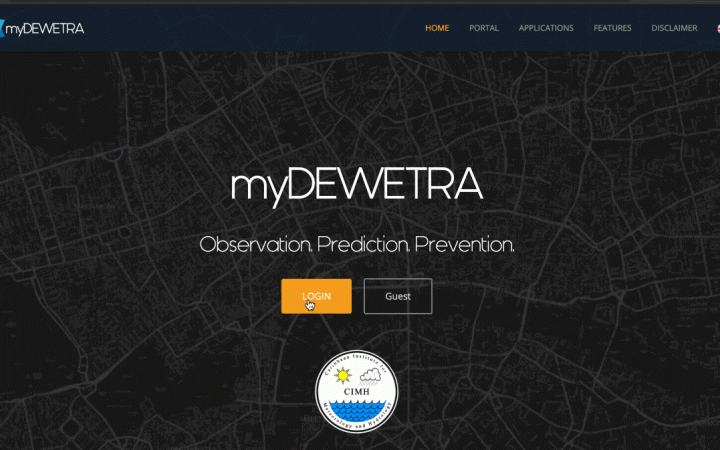18 December 2020, Geneva, Switzerland and Georgetown, Guyana – The Flood Forecasting System, under the project “Strengthening Women’s Disaster Management Capacities in Guyana and Dominica” funded by the Government of Japan and led by UNDP Guyana, was implemented by UNOSAT in close collaboration with CIMA Research Foundation. This is the first of two components of the “Development of Guyana National Flood Early Warning System (NFEWS)“ initiative supported by the Hydrometeorological Service of the Ministry of Agriculture of Guyana (Hydromet).
Despite Dominica and Guyana’s agriculture sectors being the primary industries, the sector has constantly been affected by disasters. Recurring hurricanes, floods and droughts represent real threat to development and food security at the national level. It also increases the vulnerability of local communities and puts small farmers, live stock holders, and agro-processors, who are primarily women, at risk.
Developing climate resilience and mainstreaming gender-responsive policies is therefore key to ensuring sustainable economic growth, food security, and reducing poverty. As part of the project Strengthening Women’s Disaster Management Capacities in Guyana and Dominica, the activities led by UNOSAT under the initiative “Development of Guyana National Flood Early Warning System (NFEWS)“ encourage national stakeholders to integrate gender analysis, climate and disaster risk resilience in their agricultural policies and practices through the use of Geospatial Information Technologies (GIT) and flood forecasting practices.
One of the very tangible products delivered in this project is the implementation of a national flood forecasting system in Guyana. This interactive platform aims to enhance disaster resilience, with a particular focus on flood-prone communities. The nation-wide flood forecasting system was implemented as the first component to support Hydromet’s flood forecasting daily practices and decision making in flood preparedness and response. The close collaboration with Hydromet and the missions to Guyana allowed to develop a robust and tailored solution, as well as build ownership of the tool by the end-users.
The operational tool is based on an innovative flood forecasting chain and provides Hydromet officers with daily updates on near-future hydrological conditions. Each day the system autonomously collects available rainfall observations, merges these with local meteorological forecasts, and uses this information as input for a hydrological model (a numerical utility able to convert precipitation to streamflow in rivers). Prediction of discharge expected for the next 5 days is provided twice a day at 70 locations all over Guyana.
The operational tool is based on an innovative flood forecasting chain and provides Hydromet officers with daily updates on near-future hydrological conditions. Each day the system autonomously collects available rainfall observations, merges these with local meteorological forecasts, and uses this information as input for a hydrological model (a numerical utility able to convert precipitation to streamflow in rivers). Prediction of discharge expected for the next 5 days is provided twice a day at 70 locations all over Guyana.
“The platform being developed under this project will revolutionize the way we do flood forecasting in Guyana. The platform is transformational for flood forecasting in Guyana and will significantly improve our preparedness and response to floods.” Dr. Garvin Cummings, Chief Hydrometeorological Officer, Hydrometeorological Service, Cooperative Republic of Guyana.
Another significant feature of the flood forecasting system is the high flow estimates, based on a real-time inundation modelling at four flood-prone communities in Guyana. Data surveys have been conducted on the fields in direct collaboration with local technicians to gather hydraulic information to better respond to the specific needs of the communities. In case a possible inundation is foreseen at any of the four communities, an automatic warning is sent via email to forecast officers in duty in order to timely trigger early warning and appropriate early action if needed.
All results are available and accessible by Hydromet on the Caribbean Institute for Meteorology and Hydrology (CIMH) Dewetra Early Warning platform, a web-based tool devoted to real-time monitoring and forecasting of weather-related hazards.
The implementation of this robust flood forecasting modeling tool is the first step to strengthen the Guyanese NFEWS. To ensure a sustainable impact and strengthen technical capacities, a number of capacity development activities are scheduled as the second component of this initiative. For more information, please contact UNOSAT at unosat@unitar.org or UNDP Guyana at registry.gy@undp.org .


